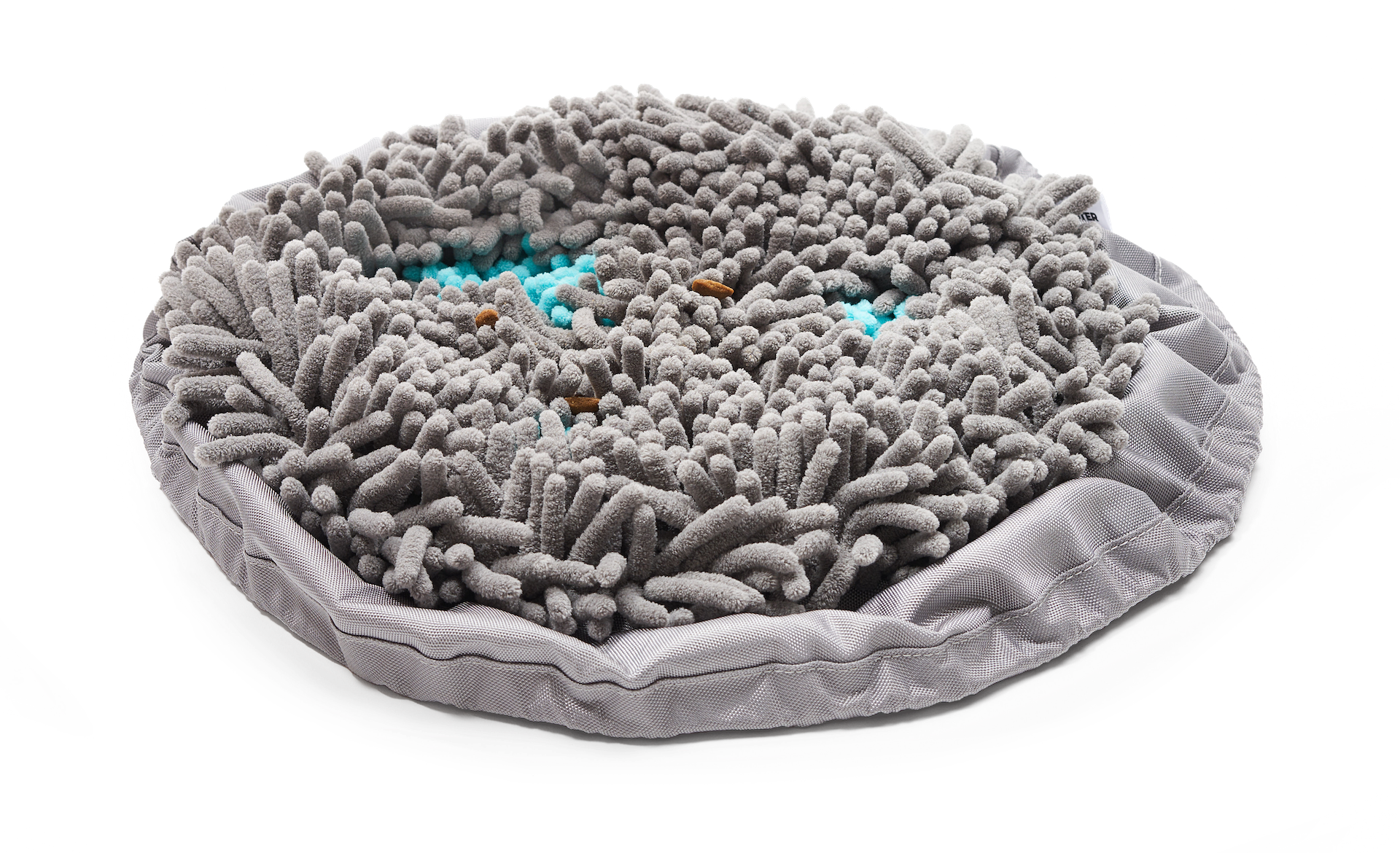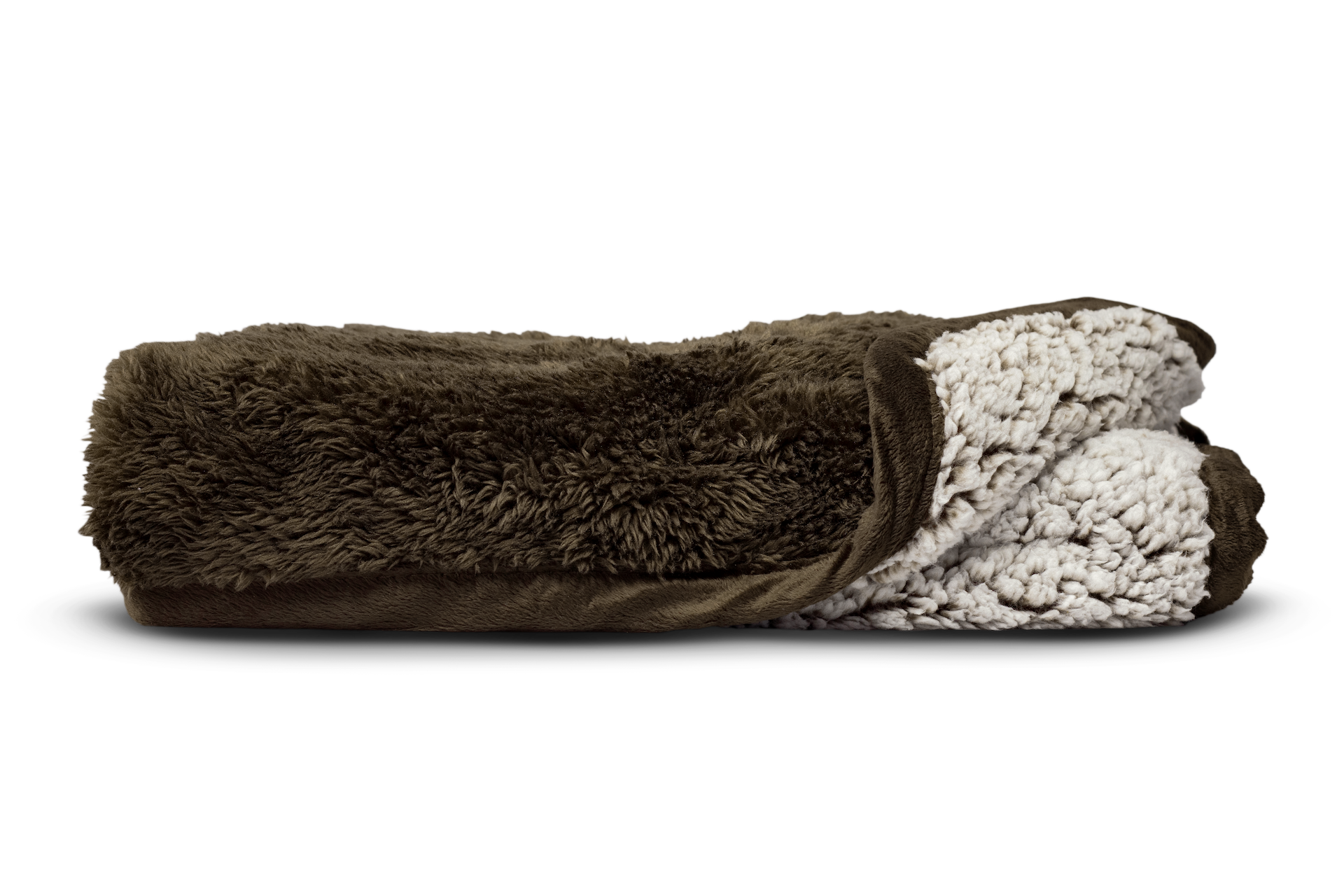Does your dog pee a little bit when they are in trouble, excited, aroused or intimidated? Maybe you've noticed some puppy anxiety peeing or your dog gets scared and pees. What looks like a housebreaking problem is actually known as submissive urination which is a common behavioral problem in shy and timid dogs.
In order to understand submissive urination in dogs it’s important to understand that it is a subconscious response to dominance that your canine cannot control. Dogs elicit submissive signals to show their recognition towards your dominance.
"Submissive urination is an uncontrollable and instinctive reaction of dogs to show social appeasement and submissiveness."

Averting eyes, rolling on their back, and urination are all signs that express submissiveness. Although this behavior is more common among puppies, some remain timid even during their adulthood and then urination may become a frustrating problem. In this article, we will address how to stop submissive urination in female dogs and male dogs and how to identify submissive peeing. Plus, how to stop submissive urination in dogs.
Submissive Urination in Dogs
Submissive urination is an uncontrollable and instinctive reaction of dogs to show social appeasement and submissiveness. When a dog pees in submission, they are not trying to irritate you, they are actually trying to convey to you that they are not a threat. It is also their way of communicating to you their frustrations. Your dog peeing is informing you that they do not feel secure.
Submissive Urination vs. Excitement Urination
Although they may seem the same, there is a big difference between submissive urination in dogs and excitement urination. Excitement urination is when your dog becomes too stimulated by surroundings and starts peeing in response. If your dog pees when excited, it is excitement urination. Submissive urination or dog submissive peeing is a response to fear or anxiety, rather than excitement. If you're wondering how to stop a dog from peeing when excited, learn more about excitement urination here.
Your dog's peeing can be a sign of different illnesses or unpleasant behaviors. But, you are probably challenged with submissive urination if your furbaby pees during these particular events and settings:
Peeing together with submissive postures, like tail tucking, crouching, whelping, or rolling over to expose their belly are all common signs of submissive urination.
The following tips can help your prevent submissive urination:
Consult a Vet About Dog Submissive Peeing
In order to deal with any problem effectively, knowing the cause is the key to finding the solution. Take your dog to a vet and get them examined for any possible physical abnormalities pertaining to his problem. Difficulty in controlling the bladder can also be due to sickness or disease, according to Outward Hound. If this is the case with your canine, your vet will guide you through the best possible treatment options and coping mechanisms. Knocking any sort of health issue out of the way, will help you move on to the next step in how to stop a submissive dog from peeing.
How to Stop Submissive Urination Peeing
Once you’ve ruled out medical causes, you can take appropriate steps to manage, minimize or stop the behavior. With a little bit of training, working together as a team, and patience you can help your canine outgrow submissive urination. Listed below are few steps that you can take for how to stop submissive urination in dogs. Here are some ways to help your dog with submissive urination:
Build Confidence
Since lack of confidence and shyness is usually the primary cause behind submissive behavior, you must start by taking some measures to build up your dog’s confidence. Talk your pup up, and treat him gently throughout the day. Indulge in confidence building exercises like “Find it," “Treat and Retreat” etc. Make sure you keep the play time low-key so that it doesn’t overly excite your dog!
Snuffle mats are an excellent way to help your dog build their confidence. The Forager™ Mat and Forager™ Bowl are snuffle mats and bowls with SoftSnout™ material that is non-abrasive to dog noses. Simply scatter your dog's food or treats into the the snuffle mat or bowl and let your dog forage for rewards. This works their natural instincts and provides an instant reward, helping them build their confidence!

Identify Triggers
Next, try to identify the triggers that usually lead to leaky accidents. This step will help you greatly in preventing submissive urination. Meeting new people; making direct eye contact; loud noise or fast movements; scolding or physically correcting the puppy are some of the scenarios that usually act as a trigger. Avoiding these situations can help minimize the behavior.
Empty Their Bladder
Take your pooch outside frequently to keep his bladder empty and avoid messes. You can also use Pet Parents® Dog Diapers or Male Belly Bands if you plan on staying indoors for training. Dog diapers can prevent messes from male or female submissive urination, while belly bands are designed for males. If you lose your temper at the time of an accident and engage in scolding or physically correcting your puppy, it will only reinforce his fear and need to be submissive for you. Then you will feel like you are running in circles! Using dog diapers will help you minimize the messes due to submissive urination and keep your calm.
Show That You Are Not a Threat
Avoid approaching submissive dog with posture that they may interpret as dominant or confrontational, as stated by The Humane Society of the United States. Also, avoid direct eye contact. It’s best that you look at their backs or tails instead. It will also help if you try to get down on their level by bending knees rather than leaning over from the waist. According to the San Francisco SPCA, speaking in a calm, low-pitched tone can help your dog feel more comfortable.
It’s also helpful for your dog if you ask other family member to approach them in the same way. Another thing to consider is to opt to rub them under their chin and not on top of their head. Approach them from the side, rather than head on, and/or present the side of your body to them.
Have Patience with Submissive Peeing
Be patient! Your dog may respond slowly and steadily to submissive urination training. Also, try to be careful about your body language and vocal tones; our pups pick up on everything! Most submissive urinators are sensitive to imposing body language and exciting movements. Patience is key in learning how to stop a submissive dog from peeing.
Avoid Punishments
Avoid punishing your dog and instead adopt a positive, calm approach. Punishing your dog will only worsen their submissiveness and cause your dog to fear you. Instead, redirect them. If they are able to control their submissive urination, reward them.
Most puppies usually grow out of submissive urination in about a year. The above mentioned tips will help you cope with your pet’s behavior in a slightly better manner and also prevent any unpleasant messes. Remember, if you are wondering how to stop a dog from peeing when excited, you will be looking to prevent excitement urination. To help prevent submissive urination, it is best to give time, patience, and socialization to help build confidence.

"Although they may seem the same, there is a big difference between submissive urination in dogs and excitement urination."









